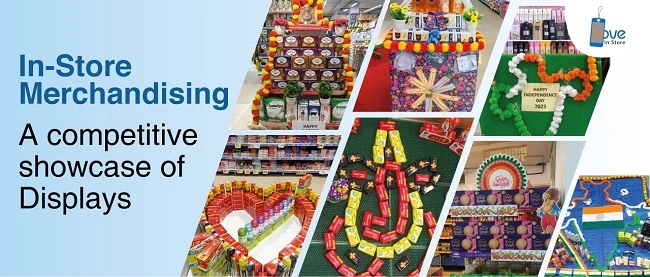Merchandising 101: All You Need to Know for Your Store!
Retail businesses use it to attract shoppers when they visit their stores. The way products are displayed, the look of the store, and even the sounds and smells affect the customer experience when they visit your store. Amazon Worldwide enables customers to buy what they want with just a few clicks. Shoppers no longer have to physically visit a retail store if they don't want to, but they still shop in stores. Click here to sell online and directly through Shopify.
 Consumers spend more in stores than online, with 85% of UK shoppers preferring to shop in stores, according to Drapers.
Consumers spend more in stores than online, with 85% of UK shoppers preferring to shop in stores, according to Drapers.
Why do people still go shopping?
They want to interact with the product before they buy it. Some people use “split therapy” as a way to relieve stress. According to Forbes, 74% of people say they've done “stress shopping” before.
People still shop in-store, and well-executed merchandising gets customers through the door, through the product displays, through the fitting rooms, and into the checkout. This article will help you better understand retail, the elements of retail planning, and how to manage your merchandise successfully.
But retail is also about choosing the right products and purchasing the right amount of SKUs and inventory at the right time. The main purpose of retail is to drive sales in stores. Careful planning, management, and analysis are important steps in building a successful business.
In store merchandising helps connect the brand's online experience with the physical store.
Merchandising vs. Marketing
It can also be a form of marketing when used to display promotional, seasonal, or additional items in retail stores. Creating a product marketing calendar allows you to plan campaigns to highlight which products on certain days.
Shoppers get overwhelmed when they have too many options. Retailers help prevent this by assisting customers to relax and shop faster. The more time you spend organizing products in your store, the fewer customers you will have. Cluttered displays with randomly grouped products can confuse shoppers and cause them to leave the store. Too many bad in-store experiences can cause items to sit around for a long time. Old stock is like spoiled milk. If it goes bad, it is thrown away. I'm not saying you should throw away old inventory, but throwing away old lists can lead to extreme markdowns that hurt your retail margins. Selling something for less than what you bought it for is like throwing money out the window.
Good in-store merchandising allows customers to focus on specific in-store displays. Lights can draw people to your facility, and signs can spark ideas or interest. All of these elements can then come together to make people want to buy more. A solid retail plan requires an understanding of trends, color theory, and the negative impact of old inventory. Creativity combined with strategic thinking is key to creating engaging in-store shopping experiences.
Here are some things to consider when creating your sales plan:
Select the product you want to advertise. In most cases, you'll want to focus on new, best-selling, and core products with high-profit margins. You can use the break-even formula to understand better the profit margin associated with your product. Change the products you advertise from month to month (or week to week) depending on what you want your customers to focus on. Decide on your store layout and plan your traffic flow. The design of the store or planogram affects the shopping experience. Stores with overcrowded shelves and cluttered shelves attract shoppers who don't care about low prices. On the other hand, a well-organized minimalist store can better showcase certain products and their value. You can choose something in between to present a rich but manageable range of products.
Set a budget for your in-store displays. Set a budget for inventory purchases and marketing activities to attract people to your store. Develop a retail plan in advance to take advantage of seasons, holidays, and other special events.
Consider how long it takes the product to reach the floor. How long it takes to sell your store will depend on your circumstances, including how many SKUs you have, whether your displays have special requirements (e.g., security), how easy it is to move light fixtures, and the size of your display cases.
In addition to planning product displays in stores, merchandising planning is critical to optimizing retail sales, reducing out-of-stock events, reducing price requirements, and increasing margins. You can also use open purchase plans (OTB) to manage inventory in the store better.